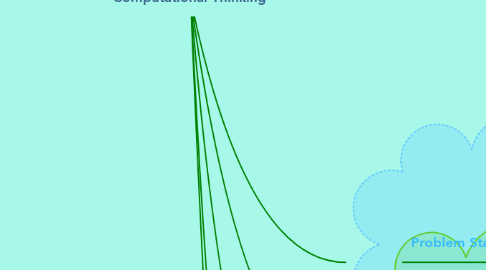
1. References Google Computational Thinking for Educators. (n.d.). What is computational thinking? Retrieved from https://computationalthinkingcourse.withgoogle.com/unit Google for Education. (2012, June 22). Solving problems at Google using computational thinking [video file]. Retrieved from https://www.youtube.com/watch?v=SVVB5RQfYxk
2. Problem Statement:
2.1. Cathy and her husband Daniel want their children, Violet and Fritz to go to bed on time. Violet and Fritz want to stay up late to watch the Winter Olympics, a once-every-four-years event. Cathy is torn and wants her children to enjoy the amazing athleticism and expose them to new sports that are rarely seen, but the daily routine is important in the overall health of the children. How will Cathy balance the daily bedtime routine while exposing Violet and Fritz to the Olympics?
3. Decomposition:
3.1. First Cathy needs to break down the problem into smaller parts. She must find a way for Violet and Fritz to enjoy the Olympics and continue the already-established bedtime routine. So, she lists all that the nighttime routine includes: eating dinner, brushing teeth, changing into pajamas, reading books, conversing, and singing songs. She also lists the morning routine: wake up, eat breakfast, listen to wake up music, conversing, change clothes, brush teeth.
3.1.1. Rationale:
3.1.1.1. To decompose the problem of keeping daily routine similar while watching the Winter Olympics, Cathy broke the problem up into "smaller, manageable parts" (Google Computational Thinking for Educators, n.d.) by writing down all of the steps in both the nighttime and morning routines.
4. Pattern Recognition:
4.1. Cathy looks at the nighttime and morning routine to see some commonalities. She sees that in both morning and night, Violet and Fritz are eating, brushing teeth, music activities, conversing, and changing clothes. She sees that book reading is only a part of the nighttime routine.
4.1.1. Rationale:
4.1.1.1. In order to provide pattern recognition, Cathy identified "similarities and differences" (Google for Education, 2012) in the nighttime and morning routines.
5. Algorithm Design:
5.1. Cathy creates a schedule combining some of the nighttime routine, with the morning routine, and including Olympic watching, thus condensing some of the time it takes to accomplish all of the tasks. Cathy and Daniel will record the Olympics so the family is able to fast forward through the commercials and skip the less interesting events. When the children arrive home, they will immediately eat dinner, and change into the next day's clothes. This will eliminate the need to change clothes twice. Cathy and Daniel will have books readily available if the children lose interest in an event. This will help provide literacy opportunities, along with opportunities to watch a rare televised event. While watching the Olympics, Cathy and Daniel will interact with their children and talk to them about their day. This will provide the opportunity for the family to converse with each other and eliminate the need to have lengthy discussions at bedtime. Fifteen minutes before bedtime, the TV will go off and Cathy will play a nighttime playlist on her phone, thus signaling bedtime while including music. The children will know it is time to brush teeth (the last step before getting into bed). Cathy will pack a natural protein bar in Violet and Fritz's backpack for breakfast the next day. This is an easy way for the children to get a quick breakfast and eliminate the need to cook in the morning.
5.1.1. Rationale:
5.1.1.1. For Algorithmic design, Cathy wrote down a step-by-step schedule (Google for Education, 2012). This allowed her to take the opportunity to combine duplicate routines into one routine and add Olympics watching into the daily routine.
6. Abstraction:
6.1. Cathy sees that it is possible to add to the nighttime routine for special events. When the children go to bed, they will have already eaten dinner, conversed with their parents, listened to music, changed clothes to the next day's clothes, read books, and watched a condensed version of the Olympics. The only thing Violet and Fritz will need to do is sleep. Cathy and Daniel will have provided all of the educational and daily routine opportunities that their children need to function and added in the bonus activity of watching the Winter Olympics. Now when there is something special happening during the week, Cathy and Daniel have an idea of how to shorten or combine daily routines to accommodate for new experiences.
6.1.1. Rationale:
6.1.1.1. Cathy and Daniel are able to transfer the plan that they used for combining watching the Winter Olympics into Violet and Fritz's daily routine. They can "identify the principles that generate the patterns" (Google Computational Thinking for Educators, n.d.), thus providing opportunities for experiencing cultural events on school nights.

